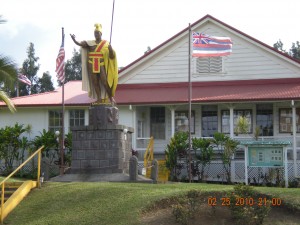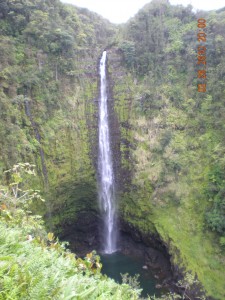I have just returned from a 2-week vacation to the Big Island. My trip involved three-legs on United Airlines going, a round-trip between Honolulu to Hilo on Hawaiian Airlines, and another 3-leg trip on United Airlines returning back here to North Carolina (RDU). These are some observations of things that got my attention.
United Airlines
I spent the better part of 3-weeks putting our itinerary and bundling our tickets, selecting our seats, and purchasing everything. (There were 7 of us traveling all together and while we all left together, we returned in 2 groups with 2 final destinations.) Purchasing these tickets on-line was an experience, to say the least. I could not buy all of them from one site. I ended up using three sites to purchase 3 sets of tickets because no one site would show me the same bundling/routing options. I have done this many times before and this was the first time I ran across this particular complication.
We all checked in on-line the night before our departure and printed out our boarding passes, except for my oldest daughter who downloaded her’s onto her smart phone. For some unknown and unexplained reason, United Airlines had taken it upon themselves to re-assign our seats so we were no longer seated together. [I understand there is always the possibility of an equipment…airplane model…change which requires such a change, but this was not the case.]
Even though I had notated on the information provided when purchasing these tickets that 2 of our passengers were children, ages 1 and 4, they still split us up. Even when we weren’t split up, they had swapped my daughter’s and my seat around; she prefers aisle seating, so I took a window with my granddaughter in-between us. Our tickets, however, showed my daughter in the window seat and me in the aisle seat for all six legs!
On the second leg of the outbound flight, my son-in-law and daughter were both separated from our grouping and seated several rows away. I asked the gentlemen who was seated in my original window seat if he would exchange seats for our separated window seat and he said that he was with someone several rows forward, as some kind of explanation for why he wouldn’t help us out (???). Whether he was also victim to United Airline’s unexplained reassigning of seats, I do not know. (Frankly, I was a little miffed at the guy and really didn’t care, but I digress.)
United Airlines also had no record of our having pre-paid for our baggage fee. I had taken the precaution of printing mine out, but my daughter did not and ended up having to re-pay it, figuring she would work it out with her credit card company at a later time.
The good news is, all flights were on-time for the outbound flights and all but our final leg was on-time on the return trip.
The bad news is, my daughter’s baggage (suitcase and box) remained behind in Houston, while my granddaughter’s car-seat (which I was most worried about) and my suitcase made it all the way to Raleigh (RDU). (The sad thing is, Houston is where we were delayed for some two-and-a-half hours, so you would think the luggage would have had no problem at all getting onto the aircraft.)

Hawaiian Airlines
On my trip from Honolulu to Hilo, we were running a little tighter than I like to be, but being “just-in-time” is my sister’s norm, so since she was driving, we got to the airport with me feeling a little stressed and her insisting, correctly, that there was lots of time. I should add, part of the reason for my wanting to arrive with breathing room is that Hawaiian Airlines has a reputation for not just being ON-time, but sometimes leaving early!
Well, upon arriving at the gate, my plane had not even arrived yet, but I took the missing plane as a sign that I had once again (yes, I was left behind once even though I had arrived prior to my departure time). So, I sadly approached the gate agent and said that I needed to be put on the next flight to Hilo, if she would help me out. She glanced at my ticket and simply said that I had not missed my flight. (I had misread the “boarding” time for “departure” time.)
The in-bound plane did not arrive until 30 minutes prior to my scheduled departure time, so I figured we would be late leaving. The last passenger shuffled off the plane with 13 minutes left for us to leave on time. To my surprise, we not only got everyone boarded, but we pushed back from the gate exactly at the scheduled time. Kudos to Hawaiian Airlines for their superior turn-around time! It also goes a long way to explain why Hawaiian Airlines has perennially been the #1 On-Time US Carrier.
While everything with my ticketing went well at the Honolulu Inter-island terminal, the same cannot be said for our Hilo returning flight experience. I dropped everyone and the luggage at the curb and went to return the rental van. When I got done, I found them still at the ticket counter trying to figure out (and I still haven’t heard an explanation) who was ticketed, who had paid for baggage, etc.! They had everything we had printed out scattered around the ticket counter. Eventually, they got everything straightened out and nobody had to re-pay for anything.
I will make another observation on baggage handling in Hilo. After you go through the Agricultural Inspection (no fresh fruits or live plants can be taken with you unless previously inspected and certified pest free), you then take your luggage to the ticket counter to be weighed and checked-in/tagged, and you must then take your bags to the end of the counter to be placed (by TSA?) onto the baggage conveyor belt.
My question is, why? In the past, it always went from the ticket counter directly onto the conveyor built which runs directly behind the ticket counter. Why must I now move it the extra 25′ to be placed onto a conveyor belt by yet another person? Anyone who knows the answer to this, please leave me a comment/explanation as I would love to better understand what’s going on.
On our out-bound flight from Hilo back to Honolulu, once again, the in-bound plane arrived late. Once again, Hawaiian Airlines personnel showed just how fast they can turn a flight around. They missed matching their previous time by 2 minutes, as we managed to push back from the gate 15 minutes after the last arriving passenger got off. This is particularly impressive since Hawaii is known for its laid back, slow moving people.
TSA
I was picked out for the body-scanner on both out-going and in-bound trips. What are the odds of that? In Hilo, my body profile had multiple areas lit up, such as my hat (no metal in it whatsoever) and my left knee (no metal in it whatsoever…at least none that I’m aware of). No complaints, just an interesting observation.
I also had my suitcase selected to be opened and inspected by the TSA people, to which I also have no complaints. My daughter has had her’s searched on virtually every trip we’ve made in the last seven years and they have always left her contents in such a disarray that no note was required to let her know it was searched. Mine was neatly repacked the way I had originally packed it with a note explaining that they had been through it.
Overall, I think its safe to say that vacations don’t start until AFTER both you and your luggage have safely arrived and definitely ends when you get back to the airport for your return trip! At least that’s how my vacation went. Still, I look forward to my next vacation back and it couldn’t be soon enough.





